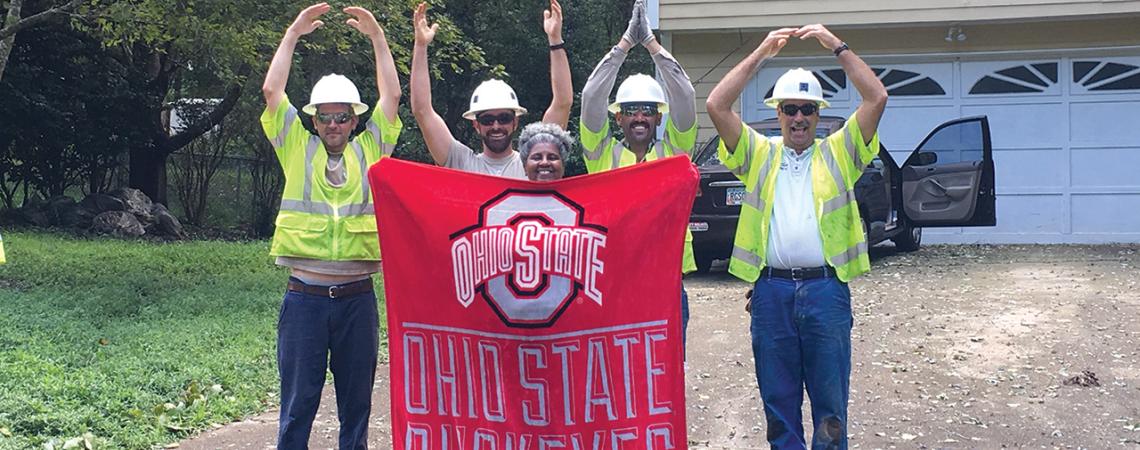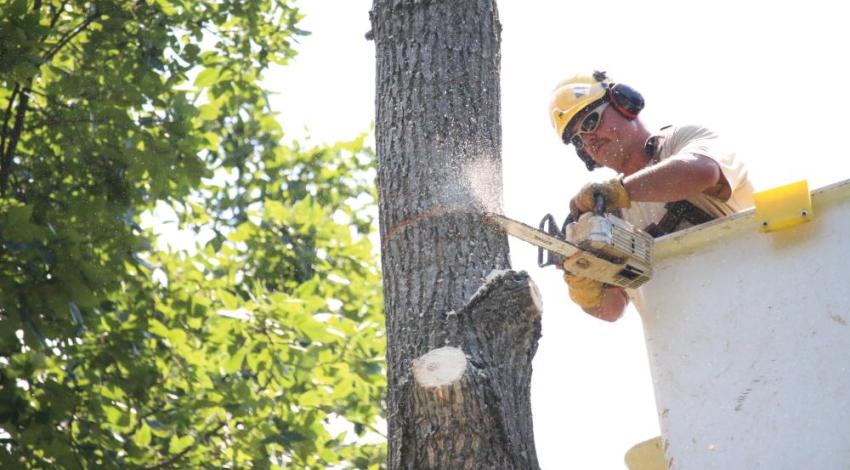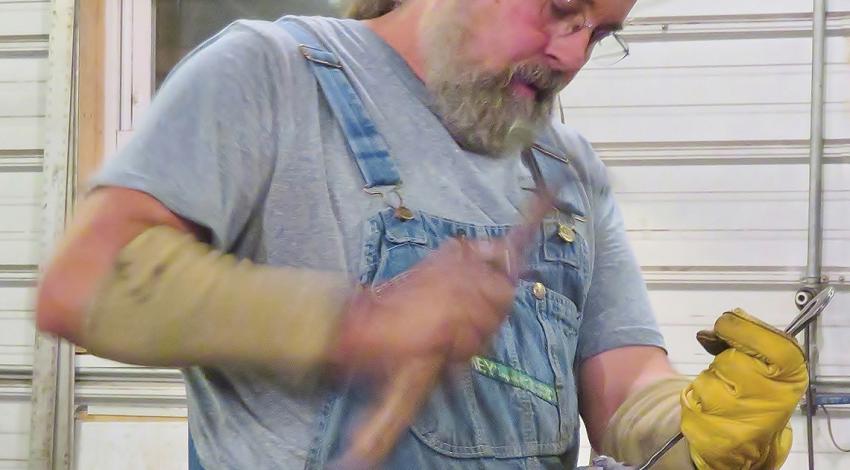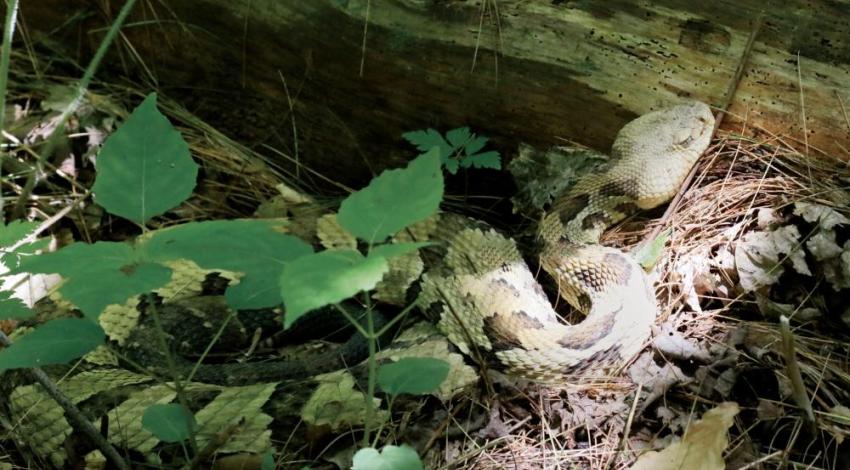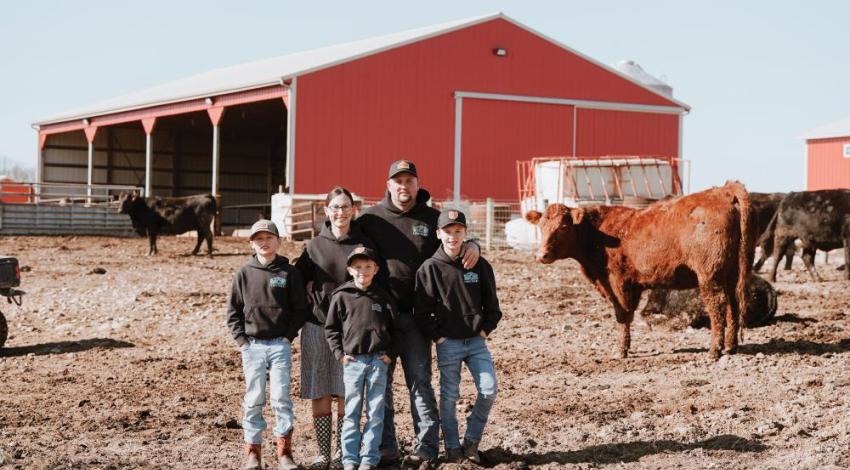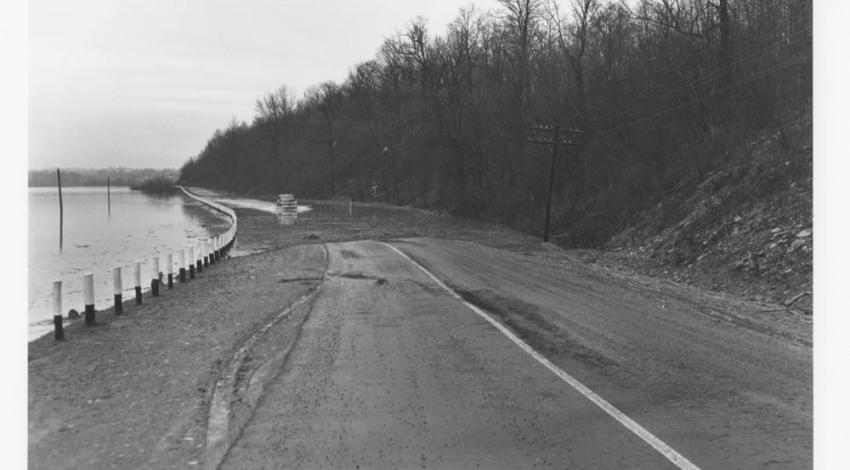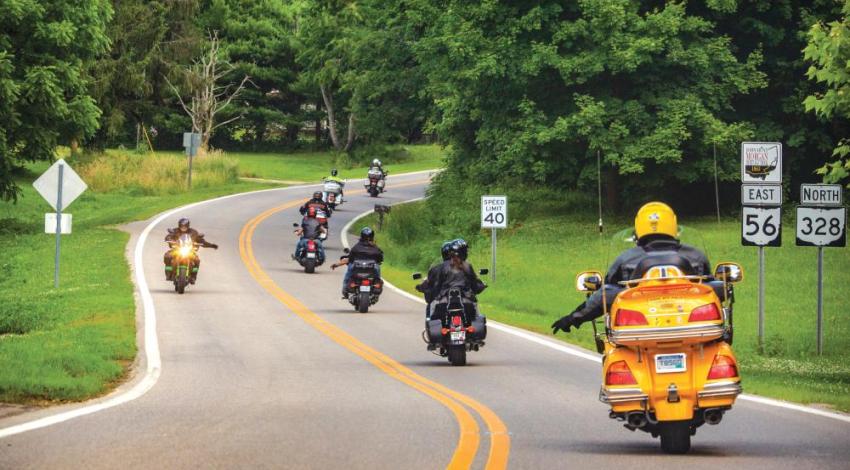Linemen from Logan County Electric Cooperative and Midwest Electric Cooperative found a friendly Buckeye face in the midst of Georgia Bulldog country, though all the Ohio workers reported residents were, without exception, friendly and full of gratitude for their efforts.
Chuck Chafin has worked on electric lines with the South Central Power Company for 18 years, during which time he’s seen his share of power outages and general destruction both in Ohio, and beyond, caused by extremes in weather.
So while he wasn’t particularly surprised at the damage that he and 72 other lineworkers and supervisors from Ohio’s electric cooperative network found in Georgia in the wake of Hurricane Irma in early September, it still presented a big job.
“There were poles down, conductor line laying on the ground covered by fallen trees, and we heard stories about transformers swinging from broken poles,” says Chafin, director of field operations at South Central Power. “They said it was the worst storm to come through there in 25 years.”
Chafin was among the 40 workers from Ohio tasked with helping Georgia’s Tri-County Electric Membership Corporation, in the central part of the state, to restore electricity to more than 18,000 members — more than 85 percent of its membership — who lost power as the result of the storm. The South Central crew was joined by crews from Buckeye Rural Electric Cooperative, Butler Rural Electric Cooperative, Consolidated Electric Cooperative, The Frontier Power Company, Guernsey-Muskingum Electric Cooperative, Pioneer Electric Cooperative, and Washington Electric Cooperative giving assistance at Tri-County.
Another 33 Ohio workers — from Carroll Electric Cooperative, The Energy Cooperative, Firelands Electric Cooperative, Holmes-Wayne Electric Cooperative, Logan County Electric Cooperative, Lorain-Medina Rural Electric Cooperative, Midwest Electric, North Central Electric Cooperative, North Western Electric Cooperative, and Paulding Putnam Electric Cooperative — headed to northeast Georgia’s Jackson EMC, which, with more than 220,000 members, is the second-largest electric cooperative in the nation. More than 115,000 of those members were left without power after Irma blew through, and 70,000 were still dark when Ohio crews arrived.
“We plan for this kind of thing all the time,” says Dwight Miller, director of safety and loss control for Ohio’s Electric Cooperatives, the statewide association that serves the 25 Ohio-based electric distribution cooperatives. “In this case, we had a decent amount of warning that the storms were on their way, and when the calls went out, our guys were on the trucks and moving.”
With the 18 cooperatives and all those men involved, it was the largest single mobilization of manpower and machinery to provide mutual aid in the Ohio association’s history. Only some unfortunate timing kept more Ohio co-ops away — the desire to help in these situations is both strong and universal.
“When you see a group of Ohio lineworkers who were not only ready, but eager to answer the call for help from their fellow cooperatives, that’s a big part of the cooperative difference,” says Pat O’Loughlin, CEO of Ohio’s Electric Cooperatives. “We help each other out when we’re needed.”
The Ohio crews arrived in Atlanta on Sept. 12 with 21 bucket trucks, 14 digger derricks, and six pole trailers, along with all the tools, chainsaws, and other equipment needed for the task at hand. Jason Woods, safety and loss control consultant at OEC, called it a “small logistical miracle” coordinating the crews and trucks with sleeping and storage arrangements.
The Ohio contingent was among an estimated 1,500 co-op lineworkers from 15 states who came to help in Georgia alone, where all 41 of the state’s electric cooperatives suffered enough damage that mutual aid was needed.
“The big thing we emphasize in those situations is the safety of our guys,” Miller says. “So many people are using generators, and if just one of them is hooked up wrong, it can put our workers in an extremely hazardous situation. We’re always careful to emphasize the need for our workers to treat every downed line as if it’s going to become re-energized while they are working on it. The guys made it back without any serious work-related injuries, and we are proud of the professional approach they take daily while their families wait for them back home.”
At its peak, more than half a million Georgia co-op members were without power. That number was whittled to only a few thousand by the time the crews headed back north on Sept. 16. “The guys didn’t want to come back when they did, because they felt that there was still a job to do,” Miller says. “That’s just the way they are. They always want to help, and that says a lot about them. But Jackson and Tri-County both felt they had the situation under control, and both of those communities were grateful for the help.”
